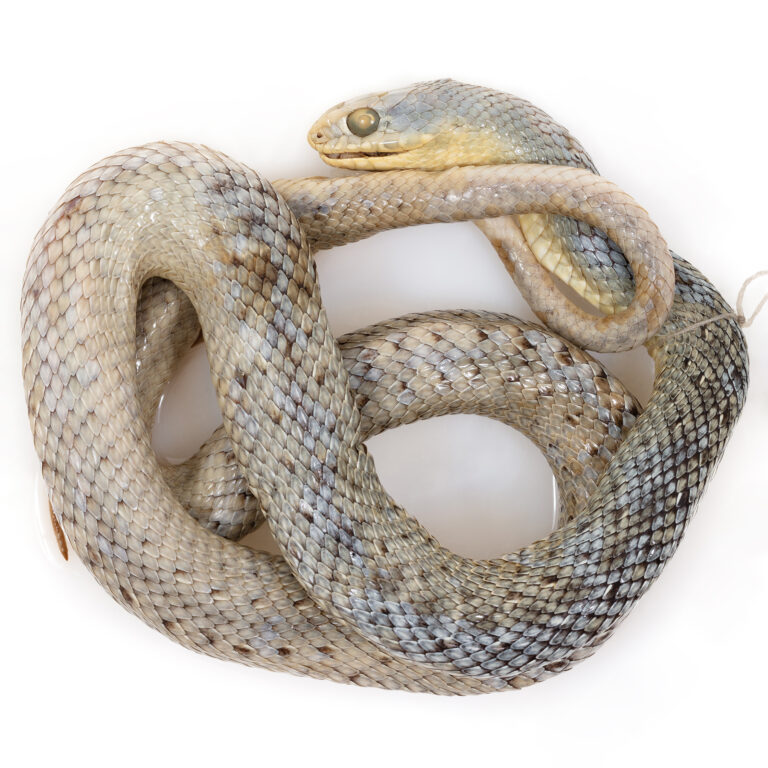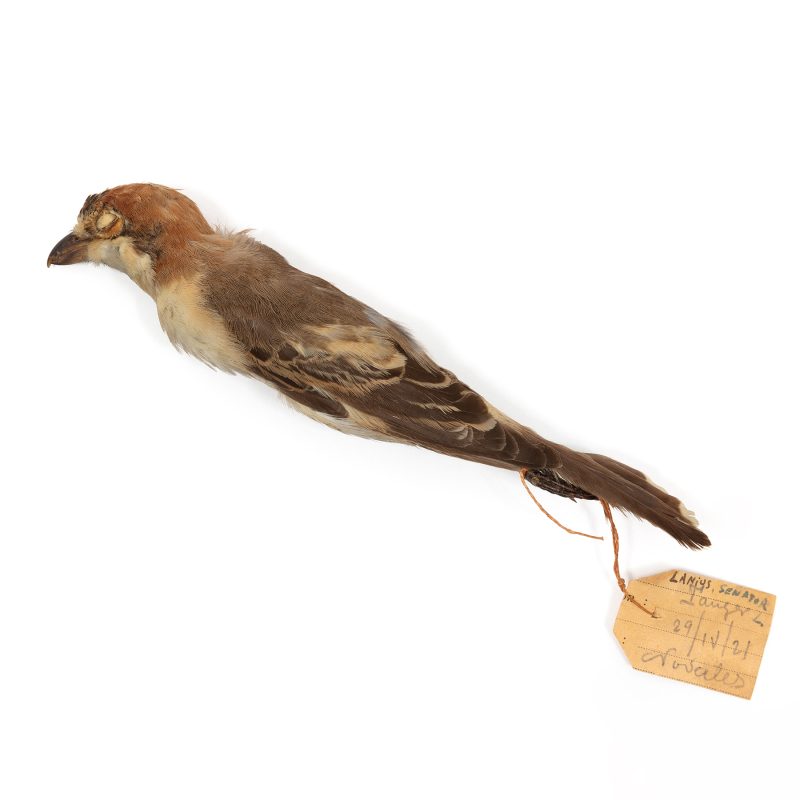Summary of results
The specimen was collected in Morocco by Manuel Martínez de la Escalera y Pérez de Rozas during the expedition organized by the Royal Spanish Society of Natural History on 29 July 1905.
Chronological reconstruction of provenance
This snake was collected by Manuel Martínez de la Escalera y Pérez de Rozas (1865–1949) on his expedition to the Moroccan city of Mogador—today’s Essaouira—in 1905. It is one of the fifteen listed specimens of chordates that have the same entry origin. This expedition was the first that Martínez de la Escalera made to Morocco, and it marks the beginning of a relationship with the country that would determine his professional future, his scientific career, and even his personal life (Martín and Izquierdo, 2011), since he lived there more or less permanently for ten years (Martín, 2011) and died in 1949.
The first dossiers we have found in the archives of the Natural Sciences Museum in relation to Manuel Martínez de la Escalera date from 1915. Therefore, it has not been possible to cross-reference specific data on this 1905 voyage. The most relevant data on the expedition have been compiled through the different existing biographies and articles on the character.
In January 1905, at a meeting of the Royal Spanish Society of Natural History, a debate was held on the destination of the next scientific expeditions. There, Martínez de la Escalera proposed that it would be appropriate to carry out an exploration of Morocco. To prepare the mission, the Comisión de Exploración y Estudio del Noroeste de África was created. It operated for more than two decades with state funds and various contributions that were managed by the society itself. In addition to a donation of five thousand pesetas from the royal family, the expedition received numerous contributions from important political figures in Madrid involved in the colonial project. Among others, the Infanta Eulalia of Spain, who contributed with ‘magnificent Goertz field glasses’ (Bol. R. Soc. Hist. Nat., vol. V, 1905: 326). It was then that Martínez de la Escalera was appointed commissioner of the commission and sent to Morocco (González Bueno and Gomis Blanco, 2007: 315).
The expedition began in June 1905 and ended in September of the same year after passing through Algeciras, Tangier, Casablanca, Safi, Mazagan and Mogador. As Jorge Pina explains:
‘Manuel Martinez de la Escalera chose Mogador as the goal of his enterprise. […] Mogador was the southernmost port of Morocco and therefore of northwest Africa. It was also the gateway to the Sahara, both for caravans and for explorers […] and Cristóbal Benítez, the Spaniard who accompanied Oskar Lenz on his journey to Timbuktu in 1880, lived there as chancellor of the Spanish consulate, which was important to Manuel Martínez de la Escalera. […] Mogador was also a frontier, and a deep one. The region south of Mogador was an area that was not controlled, neither by the sultan nor by any foreign power, and therefore rarely visited or studied. From the very first moment, Manuel Martínez de la Escalera wanted to explore that area, and he wanted to be the first to do so’ (Pina, 2011).
Among the Spanish members of the mission were Lucas Fernández Navarro (1869–1930)—who devoted himself to studying the geological constitution of the Chafarinas Islands and some nearby coastal territories—and Manuel Martínez de la Escalera (1865–1949)—who, accompanied by a hunter/gatherer and a trainer, focused on the study of the fauna of Mogador. Martínez de la Escalera left Spain with many ‘letters of introduction to consuls and diplomatic agents, which have been provided to us by the Ministry of State, and other letters of recommendation to the most influential Jews, donated to our colleague by Dr. Pulido, with a complaisance for which the Society must be very grateful’ (Bol. R. Soc. Hist. Nat., vol. V, 1905: 325).
The expedition lasted three months. In September 1905 they were already back in Madrid, having left their companions in Mogador, who continued to collect and send specimens of all kinds of species. A small laboratory was set up in Mogador. Martínez de la Escalera proposed that Josep Buigas i Dalmau, the Spanish consul, and Juan Ratto—who was known as Pepe and was the owner of the elitist Club Mogador—should become members of the Royal Spanish Society of Natural History. It is also significant that Martínez de la Escalera dedicated the name of a species to each of them.
The expedition was successful and numerous vertebrates and invertebrates were collected. For this reason, the specimens collected were exhibited in the National Sciences Museum in Madrid, in the current building of the National Library of Spain. The aim was to publicize the expedition’s actions with a large sample of zoological, geological, and botanical material from North Africa.
Estimation of provenance
Essaouira, 1905
Possible alternative classifications
Study this type of specimen in relation to its cultural context. In Morocco, there are people who are specifically dedicated to hunting reptiles for economic and/or religious purposes: the Aissaoua, an Islamic religious brotherhood considered to be one of the most heterodox (Brunel, 1926).
Today, according to the Moroccoherps project, under the term ‘Aïssaoua’ we can distinguish two groups: ‘the “traditional Aissaoua”, who are usually poor people, dedicated to the capture and sale of snakes, to occasional exhibitions and, in some cases, practitioners of the mystical rituals mentioned above.
Secondly, we find the “city Aissaoua”, who seem to have abandoned the practices of stoicism and quackery, to devote themselves exclusively to exhibitions of incantation; they are the ones we find in public places and who are commonly referred to as “snake charmers”’.
Complementary sources
Bibliography:
Boletín de la Real Sociedad Española de Historia Natural (1905). Tom V.
Brunel, R. (1926). Essai sur la confrérie religieuse des ’Aissaoua au Maroc. París: Geuthner.
Driss Ottmani, H. (1997). Une cité sous les alizés: Mogador, des origines à 1939. Rabat: La Porte.
Macías Fernández, D. (2015). Las campañas de Marruecos (1909-1927). Revista Universitaria de Historia Militar, 2(3), 58-71.
González Bueno, A. (2004). Entre balas y lodos: El trabajo de los naturalistas españoles en el norte de Marruecos (1909-1927). Dins H. de Felipe, L. López-Ocón i M. Marín (ed.), Ángel Cabrera: Ciencia y proyecto colonial en Marruecos (p. 27-45). Estudios árabes e islámicos: Monografías, 7. Madrid: CSIC.
González Bueno, A. i Gomis Blanco, A. (2007). Los territorios olvidados: Estudio histórico y diccionario de naturalistas españoles en el África hispana (1860-1936). Madrid: Doce Calles.
Marín, M. (10 de setembre del 2013). Exploración y colonialismo: José Álvarez Pérez, cónsul de España en Mogador en el siglo XIX. Scripta Nova, XVII(450). <https://www.ub.edu/geocrit/sn/sn-450.htm>.
—(2019). El diario de Cesáreo Fernández Duro durante la expedición del Blasco de Garay (1877-1878). Dins Youssef Akmir (ed.), Entre Mogador y Sidi Ifni: Españoles en el sur de Marruecos entre los siglos XVIII y XX (p. 83-114). Córdoba: Almuzara.
Martín Albaladejo, C. i Izquierdo Moya, I., ed., (2011). Al encuentro del naturalista Manuel Martínez de la Escalera (1867-1949). Monografia del Museo Nacional de Ciencias Naturales. Madrid: CSIC.
Pina, J. (2011). Manuel Martínez de la Escalera por el Noroeste de África: Expediciones entre 1905 y 1912. Dins C. Martín Albaladejo i I. Izquierdo Moya (ed.), Al encuentro del naturalista Manuel Martínez de la Escalera (1867-1949) (p. 366-367). Madrid: Museo Nacional de Ciencias Naturales, CSIC.
Pleguezuelos, J. M. (2021). Culebra bastarda – Malpolon monspessulanus. Dins P. López, J. Martín i F. Martínez-Freiría (ed.), Enciclopedia Virtual de los Vertebrados Españoles. Madrid: Museo Nacional de Ciencias Naturales. <http://www.vertebradosibericos.org/>.



